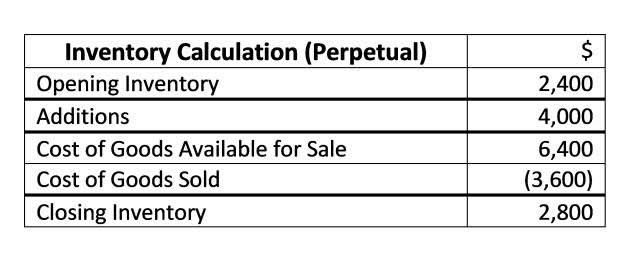
Adam Hayes, Ph.D., CFA, is a financial writer with 15+ years Wall Street experience as a derivatives trader. Besides his extensive derivative trading expertise, Adam is an expert in economics and behavioral finance. Adam received his master’s in economics from The New School for Social Research and his Ph.D. from the University of Wisconsin-Madison in sociology.
- The weighted-average number of shares of common stock outstanding during the year is used to compute the corporation’s earnings per share often shown at the bottom of the corporation’s annual income statement.
- She has worked in multiple cities covering breaking news, politics, education, and more.
- Some data sources simplify the calculation by using the number of shares outstanding at the end of a period.
- And if these instruments are in the money, they represent current ownership of the company, even if technically the shares underlying the options, warrants or debt haven’t yet been issued.
- If the beginning or ending share count were used, there would be a mismatch in the timing between the numerator (which typically spans the full fiscal year) and the denominator.
- A company’s number of shares outstanding refers to the total amount of shares it has issued.
- In other words, the formula takes the number of shares outstanding during each month weighted by the number of months that those shares were outstanding.
Example of EPS
The company can increase or decrease the number of shares outstanding by issuing new shares or via share repurchases (buybacks). The number of shares outstanding of a company can be found in its quarterly or annual filings (10-Qs or 10-Ks). In the US, public companies are obligated to report their number of shares outstanding as part of the SEC’s filing requirements. While this number is based on estimates and not on actual data, investors are often very interested in the forward EPS because, in general, investing is predicated on estimates of a company’s future earning potential. In fact, a trailing EPS is calculated using the previous four quarters of earnings. A higher EPS means a company is profitable enough to pay out more money to its shareholders.
- 11 Financial may only transact business in those states in which it is registered, or qualifies for an exemption or exclusion from registration requirements.
- It is important to always judge EPS in relation to the company’s share price, such as by looking at the company’s P/E or earnings yield.
- These earnings, reported as part of the income statement, accumulate and grow larger over time.
- A number of company activities can change its number of shares outstanding.
- A company generally embarks on a reverse split or share consolidation to bring its share price into the minimum range necessary to satisfy exchange listing requirements.
Basic Shares Outstanding vs. Diluted Shares Outstanding
![]()
For example, a company might increase its dividend as earnings increase over time. What counts as a good EPS will depend on factors such as the recent performance of the company, the performance of its competitors, and the expectations of the analysts who follow the stock. Sometimes, a company might report growing EPS, but the stock might decline in price if analysts were expecting an even higher number. In this example, that could increase the EPS because the 100 closed stores were perhaps operating at a loss. By evaluating EPS from continuing operations, an analyst is better able to compare prior performance to current performance. Though this land sale has created real profits for the company and its shareholders, it is considered an “extraordinary item” because there is no reason to believe the company can repeat that transaction in the future.
What Is the Difference Between EPS and Adjusted EPS?
Public companies are required to report their number of shares outstanding in their quarterly and annual disclosures to the Securities & Exchange Commission. Among investors, it is most relevant to those who compile a position in a stock over a long period of time, buying on the dips and holding the shares. It includes shares held by the general public and restricted shares that are owned by company officers and insiders.
The number of shares outstanding changes over time, sometimes dramatically, which can impact the calculation for a reporting period. At any given point, instruments like warrants and stock options must be accounted for as well. While shares outstanding account for company stock that includes restricted shares and blocks of institutional shares, how to calculate common stock outstanding floating stock specifically refers to shares that are available for trading. Floating stock is calculated by taking outstanding shares and subtracting restricted shares. Restricted stock are shares that are owned by company insiders, employees and key shareholders that are under temporary restriction, and therefore cannot be traded.
What Is Stockholders’ Equity?
Issued shares are those given out in exchange for money to investors or as compensation for work or supplies one does or provides for the company to employees and suppliers. While people tend to confuse them with shares outstanding, they are not completely similar. The formula for calculating the shares outstanding consists of subtracting the shares repurchased from the total shares issued to date. Understanding how to calculate a weighted average can also be useful to individual investors who want to calculate their cost basis. The cost basis refers to the original purchase price of an asset or investment for tax purposes. Investors calculate the cost basis to determine if their investment has been profitable or not, along with any possible taxes they might owe on the investment.
- Moreover, the number of shares outstanding is extremely useful when monitoring how a company conducts its business, as things like stock splits also affect share numbers.
- To calculate the weighted average cost per share, the investor can multiply the number of shares acquired at each price by that price, add those values, and then divide the total value by the total number of shares.
- If you’re interested in learning about common stock, you may also in learning about the best broker available for your needs, so visit our broker center to discover the possibilities.
- Investors can use the number of outstanding shares to evaluate a company’s financial health and performance.
- Those with complex structures, including potential dilutive securities, must report both basic EPS and diluted EPS.
- Conceptually, stockholders’ equity is useful as a means of judging the funds retained within a business.
- Treasury shares are the portion of shares that a company keeps in its own treasury.
[1] For the three months ended June 30, 2024 and March 31, 2024, these costs primarily consist of advisory, legal and other professional costs that were directly related to the Merger and Internalization.[2] For AFFO purposes, we add back unrealized (gain) loss. For the three months ended June 30, 2024, gain on derivative instruments was $0.5 million, which consisted of unrealized gains of $0.2 million and realized gains of $0.3 million. We do not consider this income to be part of our normal operating performance and have, accordingly, decreased AFFO for this amount.

